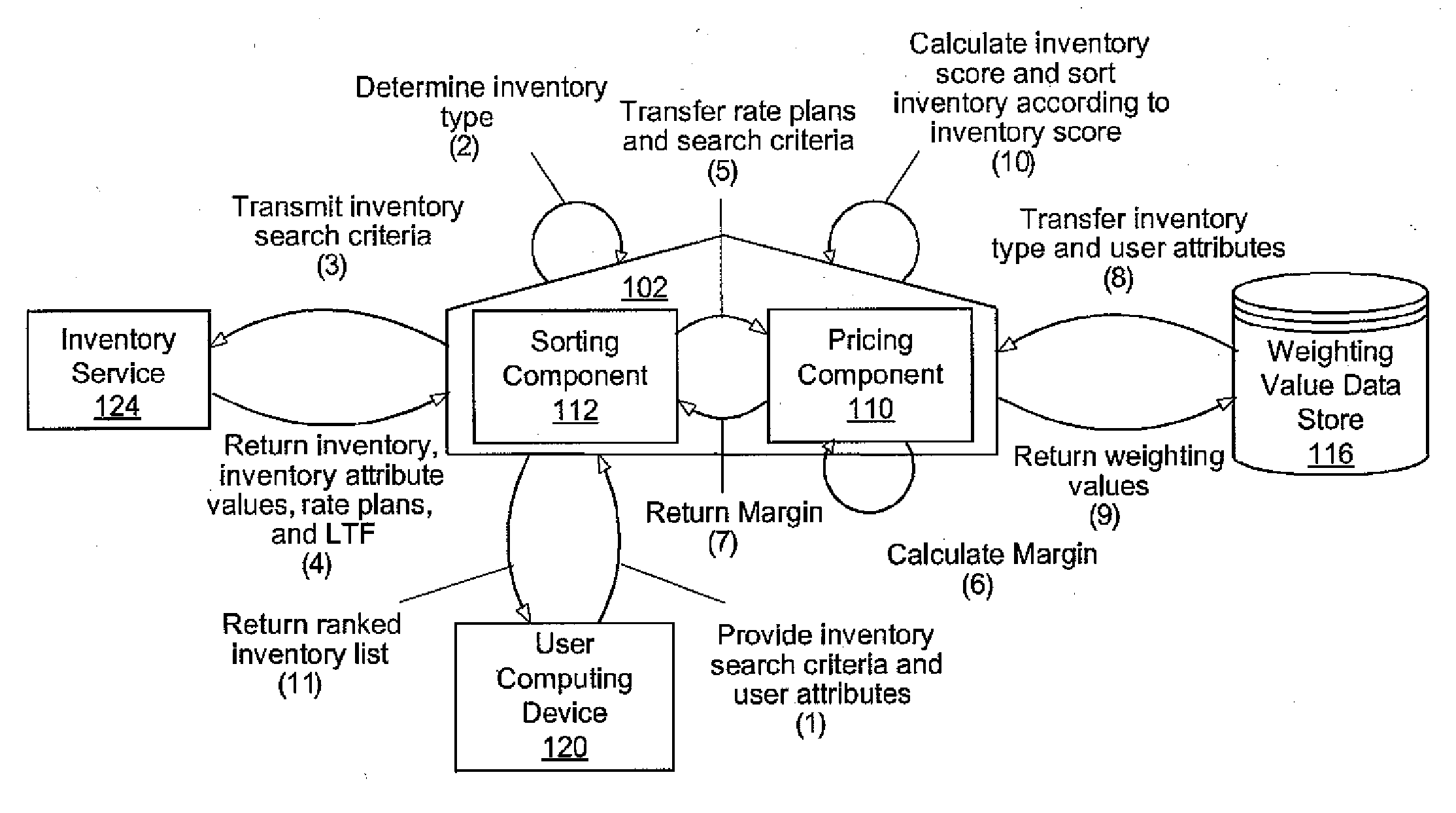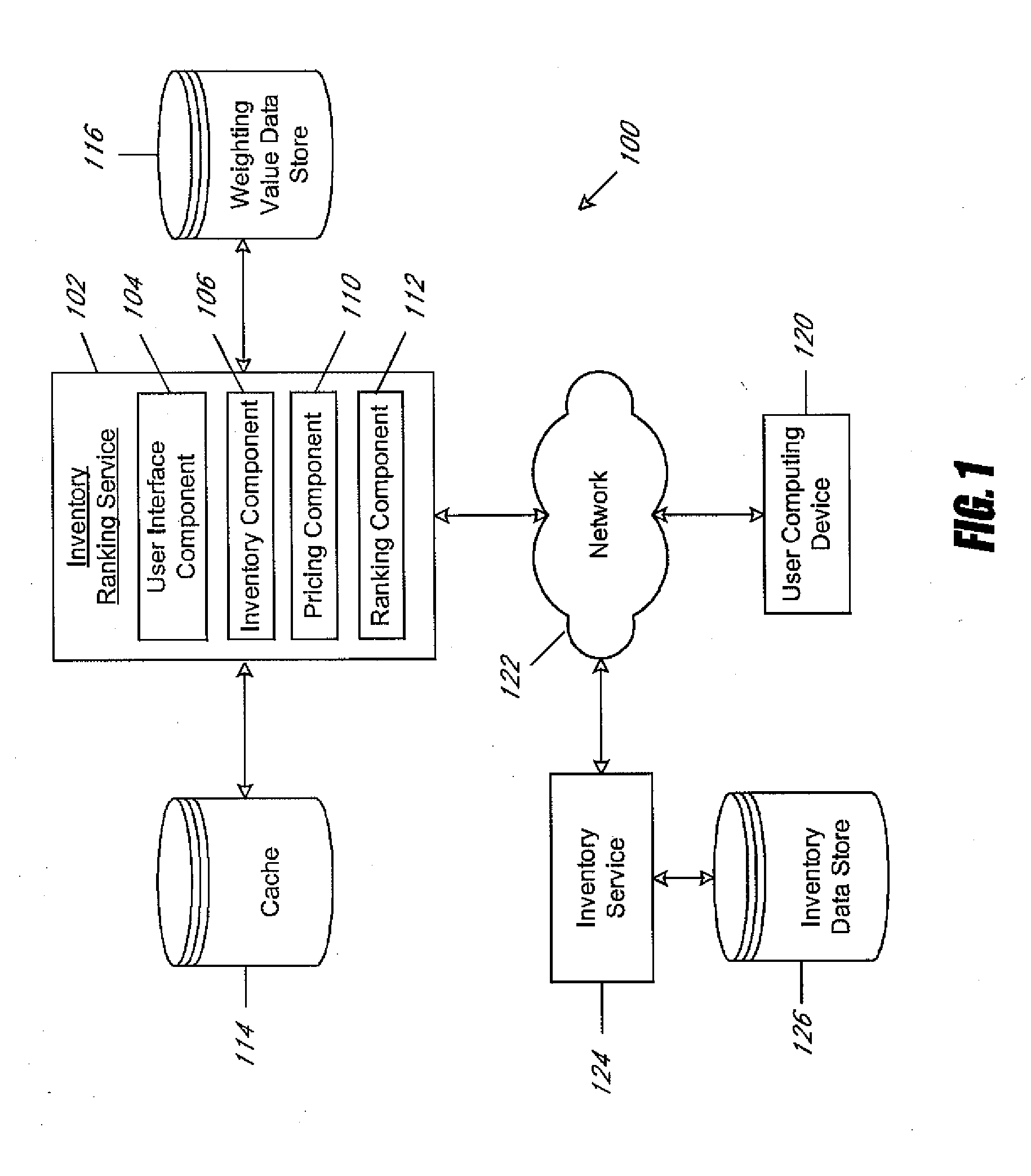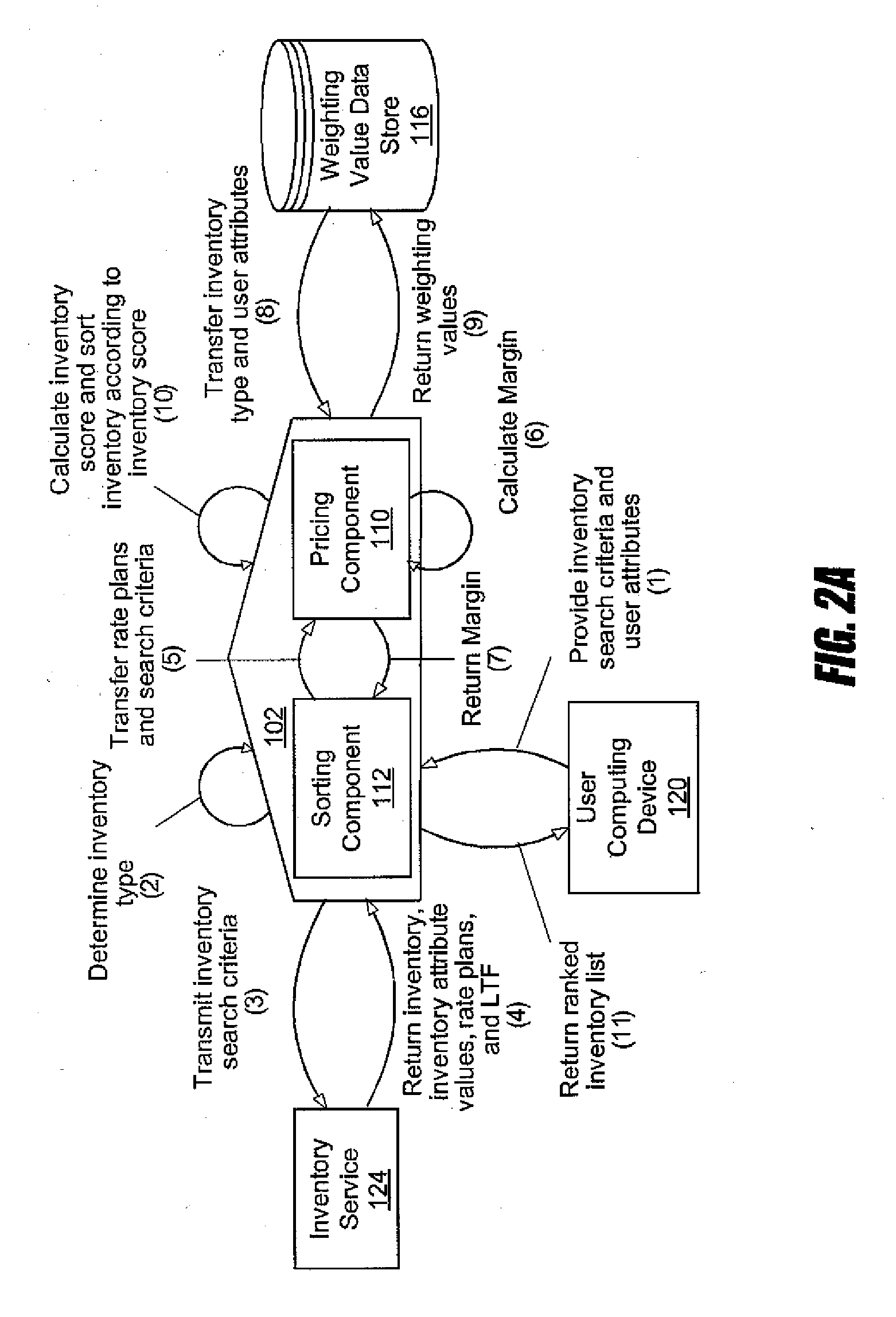Optimized inventory selection
a technology of inventory selection and selection method, applied in the direction of knowledge representation, pulse technique, instruments, etc., can solve the problems of high purchase rate of inventory items, loss of potential sales, and sales are not without problems
- Summary
- Abstract
- Description
- Claims
- Application Information
AI Technical Summary
Problems solved by technology
Method used
Image
Examples
example 1
Generation of Training Data
[0061]Assume that observations are made regarding purchasing choices with respect to a first hotel and a second hotel. In a first case, the first hotel possesses the attributes of a 1-star rating and a daily rate of $100, while the second hotel possesses the attributes of a 2-star rating and a daily rate of $100. Assuming that any other attributes of the first and second hotels are the same, except for the star rating, and the buyer chooses the second hotel for lodging, it may be concluded that a 2-star rating is preferred to a 1-star rating.
[0062]Consider a second case that is kept constant with respect to the first case, except that that the daily rate of the second hotel is increased from $100 to $120. If the user still chooses the second hotel for lodging, then it may be concluded that an extra 1-star is worth at least $20 to the buyer. By repeating this exercise, increasing the daily rate of the second hotel while keeping all other attributes of the f...
example 2
Calculation of Utility, Purchase Likelihood, and Inventory Score
[0064]Mathematically, the utility function for the two hotels may be written according to Equation 2 using the training data of Table I as:
[0065]First Hotel, i=1:
Utility1=exp(weight1*attribute1,1+weight2*attribute2,1)
Utility1=exp(40*star rating1−1*daily rate1)
Utility1=exp(40*1−1*100)=exp(40−100)=exp(−60)
Utility1=8.7*10−27
[0066]Second Hotel, i=1:
Utility2=exp(weight1*attribute1,2+weight2*attribute2,2)
Utility2=exp(40*star rating2−1*daily rate2)
Utility2=exp(40*2−1*141)=exp(80−141)=exp(−61)
Utility2=3.2*10−27
[0067]Thus, it may be seen that the utility function numerically captures the observation of the training data that the utility of the second hotel is equal to or greater than the utility of the first hotel until the daily rate of the second hotel exceeds $140. By adding more inventory attributes, a utility function valuing all the inventory attributes may be derived, provided that a training data set having sufficient ...
PUM
 Login to View More
Login to View More Abstract
Description
Claims
Application Information
 Login to View More
Login to View More - R&D
- Intellectual Property
- Life Sciences
- Materials
- Tech Scout
- Unparalleled Data Quality
- Higher Quality Content
- 60% Fewer Hallucinations
Browse by: Latest US Patents, China's latest patents, Technical Efficacy Thesaurus, Application Domain, Technology Topic, Popular Technical Reports.
© 2025 PatSnap. All rights reserved.Legal|Privacy policy|Modern Slavery Act Transparency Statement|Sitemap|About US| Contact US: help@patsnap.com



